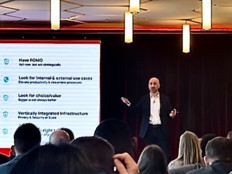Private Cloud Versus Public Cloud
As IT leaders at financial services institutions consider cloud services, it’s important that they understand what distinguishes private cloud technology from public cloud. Private cloud devotes computing resources to a single entity. An organization can host a private cloud at its own onsite data center, or the cloud can be hosted by a third-party service provider. In this model, the hardware and software are dedicated to a single organization and infrastructure is maintained on a private network — completely controlled by a single organization and not shared with others. By contrast, a public cloud setup is supported by infrastructure that may be shared by multiple organizations. The hardware, software and infrastructure of a public cloud are owned and managed by the cloud provider.
Users access data stored within a private cloud via a private connection such as a VPN, while public cloud assets can be accessed directly through the internet. The VPN provides financial institutions with an extra layer of security to protect sensitive data and helps meet regulatory and governance standards.
Financial institutions may also benefit from the cost structure offered by a private cloud. Organizations generally pay for public cloud services on a subscription basis, which costs more as they use more resources, while a private cloud model establishes a fixed cost that firms can budget for.
DIG DEEPER: Discover steps banks can take to safely migrate to the cloud.
Financial services organizations that want the benefits of private cloud, but don’t want to build out the on-premises infrastructure to support it, may elect to use a managed private cloud. In this approach, a third-party service provider manages and maintains the infrastructure in a single-tenant environment. This model can be expensive, but it provides significant benefits with security and customization.
CDW can help financial services organizations gauge where they are in their digital transformation journey. We can discuss whether cloud technologies might meet their needs and explore options regarding public or private cloud models. It’s important to keep in mind that not all private clouds are created equal. Our experts can help organizations determine which offerings best meet their needs and help them set a plan of action as they explore cloud technologies.
This article is part of BizTech's EquITy blog series. Please join the discussion on Twitter by using the #FinanceTech hashtag.











